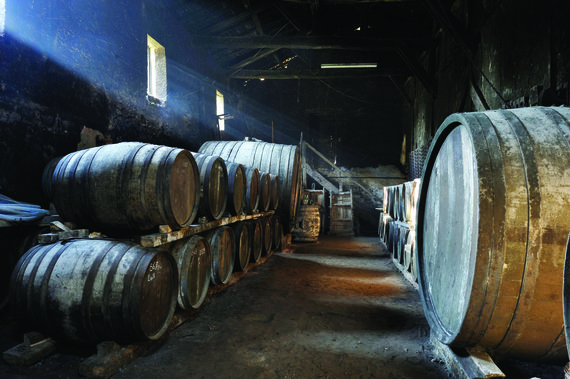COPYING THE LOOK
There are some armagnacs that ape the luxury cognac look, complete with heavy glass, glitzy labels and rich, sweeter spirit, such as Delord XO Premium. These are aimed squarely at the eastern luxury goods market.
This is a big dilemma for armagnac. To what extent should it imitate cognac? The Whisky Exchange’s Singh thinks it’s a mistake, as does Marc Darroze: “Packaging must be the way to explain rapidly what an armagnac is. Luxury is not so appropriate for armagnac because we are a bit wild and close to soil. Our packaging must reflect that.” Whereas Whitehead at Berry Bros is more measured: “Cognac is yin, armagnac is yang – two sides of the same coin. They should not try to wholly imitate or outright ignore each other with regards to production/marketing/branding etc.”
Even the rarest armagnac is cheap compared with the equivalent cognac or whisky. For example, a bottle of Casterede 1981 will set you back about €100 (roughly £83) whereas a Macallan 1981 is £1,500. Both are single cask spirits. Is armagnac too cheap? Darroze thinks so: “Ageing brandies is a big investment and long investment. A few brands are not expensive enough. I would push some brands to increase prices.”
Of course for drinkers in the know, armagnac’s affordability is a boon. What armagnac has is a great story and an unforced authenticity. Unlike in Cognac, most producers offer the complete journey from grape to bottle. Many producers also make wine, grow tobacco or raise cattle. Armagnac is rooted in the landscape, in seasonality and local gastronomy. All these notions are the sort of things that educated consumers are interested in today. Especially with the current boom in craft spirits and cocktails, it does feel like this should be armagnac’s moment. Yet it’s not fashionable in the way whisky or rum is.
What makes armagnac unique is also what’s holding it back – its small scale and lack of commerciality. The region needs to “create an identity to help producers, I think it’ll take years. They have a very strong product,” says Singh. He thinks they could be doing more to engage consumers, such as tastings at wine fairs and perhaps even the BBC Ideal Home Show. Producers just have to keep at it. It’s not easy. You need energy.
Florence Castarede adds: “Some days it is very discouraging, very hard. The only way to succeed is to be on the road. When people discover the taste and the magic, then they understand.”




